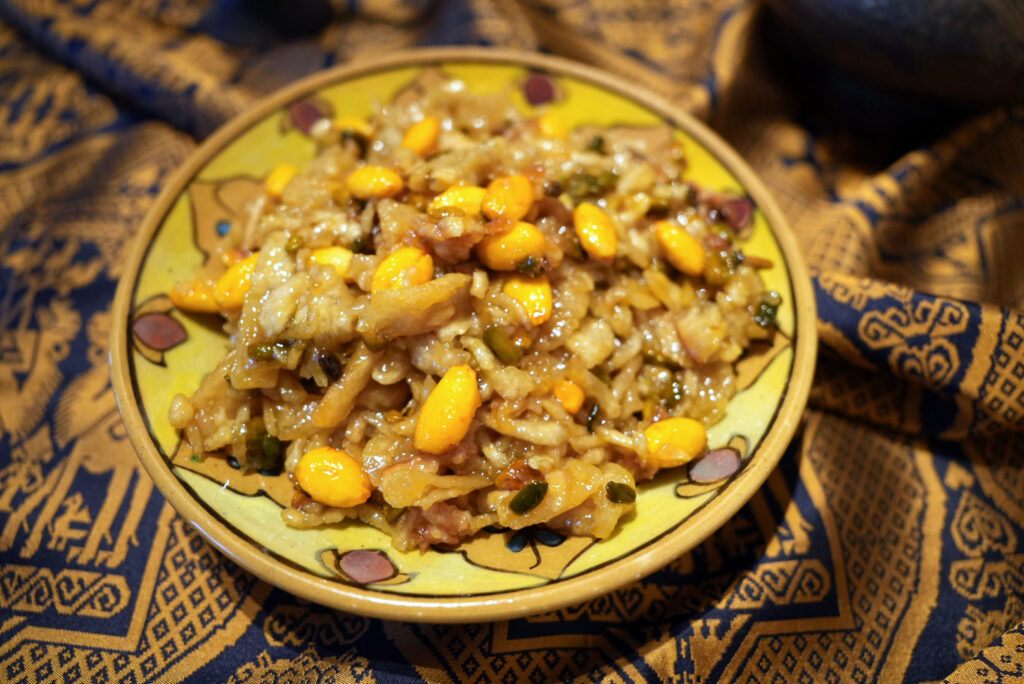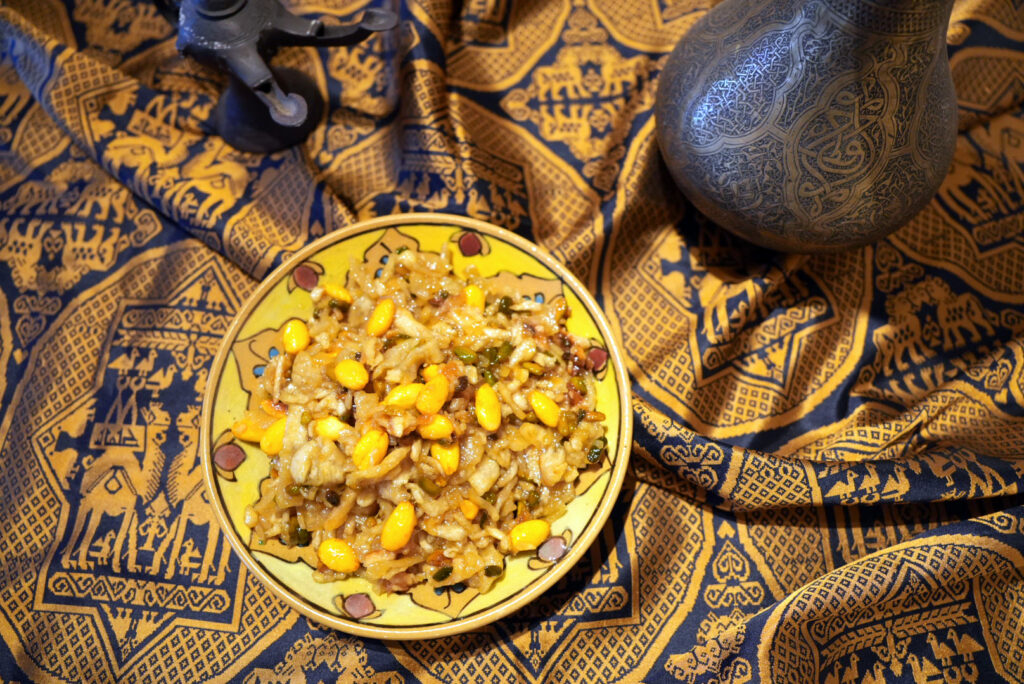This is the ancestor of the favourite Ramadan sweet, which, in its modern version, is made with shredded phyllo soaked in butter or ghee, with a filling of a mixture of cheese or cream and sugar, and topped with pistachios, almonds or walnuts. After it is baked, it is drenched in syrup.
The origins of this sweet are to be found in Egypt; the word comes from the Coptic kenefiten, which denoted a kind of loaf or cake. It was very popular in the Middle Ages, and there are nearly twenty-five recipes across six cookery books from Syria, Egypt, and al-Andalus, between the 13th and 15th centuries. The medieval kunāfa was essentially a thin flatbread, equated with a ruqāq, which was usually fried in oil, rolled up, cut up or kept whole as a crepe. Honey is often involved.
The present recreation is based on a 15th-century Egyptian recipe for a ‘cooked (مطبوخ, matbūkh) kunāfa’ from The Sultan’s Feast. The dough is cut up into thin strips, like noodles, which are cooked in sesame oil, sugar and honey. Once everything has been sufficiently stirred, it’s time to fold in saffron-dyed blanched almonds or pistachios, before adding musk and rose water. According to the author it can be stored in a container and stay good for a year. I must admit I have not put this to the test — anyway, I think the real question, of course, is who would be able to keep this delicacy for that long without eating it!
This particular variety of kunāfa has survived in the Algerian mchelwech (المشلوش), a speciality of the city of Constantine, and, perhaps more suprisingly, the Uzbek national dessert Chak Chak.


